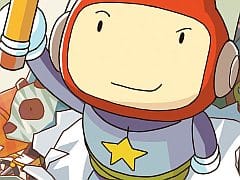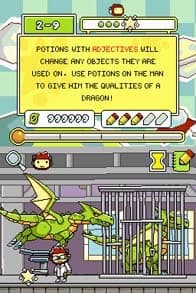You can trust VideoGamer. Our team of gaming experts spend hours testing and reviewing the latest games, to ensure you're reading the most comprehensive guide possible. Rest assured, all imagery and advice is unique and original. Check out how we test and review games here
Last year’s Scribblenauts was one of the more impressive puzzle games to come out on DS. Try to briefly ignore the fact that the game was rubbish in terms of its controls – movement was clunkily mapped to the touch screen, a design choice that was crushingly imprecise and often got you killed. Dev team 5th Cell was successful in its specific aim to create an enormous dictionary of words that could be used to solve each puzzle you were brought up against.
It was an effective novelty; the trick to Scribblenauts was the ability to produce more or less any non-trademarked item out of the game’s backlog of nouns and come out with creative solutions to basic puzzles. The core engine, a little data-driven beauty called Objectnaut, gives each object set properties which include physical characteristics, AI behaviour, and constraints on how players can interact with the object. Its framework is made up of a database of objects based on research-work done for a period of six months which involved combing dictionaries and encyclopaedias to develop a comprehensive list of items.
Unfortunately this kind of emergent gameplay – the ability to spawn items at will to make each game new and unpredictable – overshadowed the actual puzzle elements, puzzles which in turn provided the cloud for the game’s creative silver lining. In Super Scribblenauts the control issues of the previous game have been dealt with. Last time in Scribblenauts directional controls felt clumsy. Now movement is mapped to the D-pad, meaning you can control your protagonist Max with the pad while using your stylus to interact with objects and type words. Similarly the physics system has been overhauled and objects now have a bit more weight to them, which makes item-placement feel like they have a bit more mass.
But the puzzle designs have retained the same issues they had last year. You’ll be asked to find a solution to a particular problem, for instance one puzzle might ask you to bring two brothers together by giving them a sport to play with one another. Alternatively you might be asked to cause the extinction of dinosaurs or to arm a town for an inevitable alien invasion. There’s a fantastic variety of puzzles, but the solutions are weirdly rigid despite the game’s creative slant.
Giving one of the brothers a football and the other a net doesn’t solve the puzzle. Neither does giving one a football and the other keeper gear or a referee uniform. The fact that it’s possible to think up an innumerable number of solutions for the puzzle and actually put these objects into the game is testament to what the Scribblenauts does best, but the game is slightly less adept at allowing creative solutions. In reality the answer for this puzzle was to give both characters a football; not completely illogical but bizarrely specific considering the number of possibilities you have to choose from.
Similarly in a puzzle that asks you to feed a dog, the solution is to give him dog food while the other reasonable alternatives (meat, bones, leftovers) get rejected. That specificity is honed in Super Scribblenauts with the new addition of adjectives. From a technical perspective it’s a fantastically impressive feature: you can actually give traits to the objects you put into puzzles now. A dancing lady or a giant red dog will get summoned into the scene as they are described, and they’ll be animated accordingly. The game can make the distinction between Big and Gigantic, Small and Tiny, which means you’re able to dictate exactly how you want objects you look and act like in the game with maximum precision.
And it can be used to a brilliant effect. In a puzzle that asks you to cause the extinction of the dinosaurs “without weapons or asteroids” you can try to create an Exploding Tree, Acid Rain, a Hungry T-rex just to test out their different effects they’ll have when they’re animated. Shoot the dinosaurs and there will be a death-by-gun animation to follow, hell set a giant zombie on them. It’s fascinating to see these things come to life. But not everything is responsive. Beyond being technically impressive, the solutions for puzzles are always based on a very specific idea that doesn’t always encourage the variety of different answers that inevitably will be thought up. In the case of this puzzle the idea was to come up with a natural method of extinction; the game will happily take a flood as a solution, or a deadly virus. Frustrating, because this seems to be missing the point of what makes the game great – creativity. Why have so many puzzles that only require dog food or a flood and so few that require more imaginative thinking?
Super Scribblenauts hones the feature that had already worked so well in the last title and then continues to offer lacklustre puzzles with solutions that end up being weighed down by real-world logic. And it’s too bad, considering how the game is as ambitious and interesting it is in every other facet. But it is an innovative step for the series and just one year since the last title it manages to offer a bit of polish to a game with a creation system that felt legitimately new and exciting. Hopefully next time around the puzzles will follow in suit.







